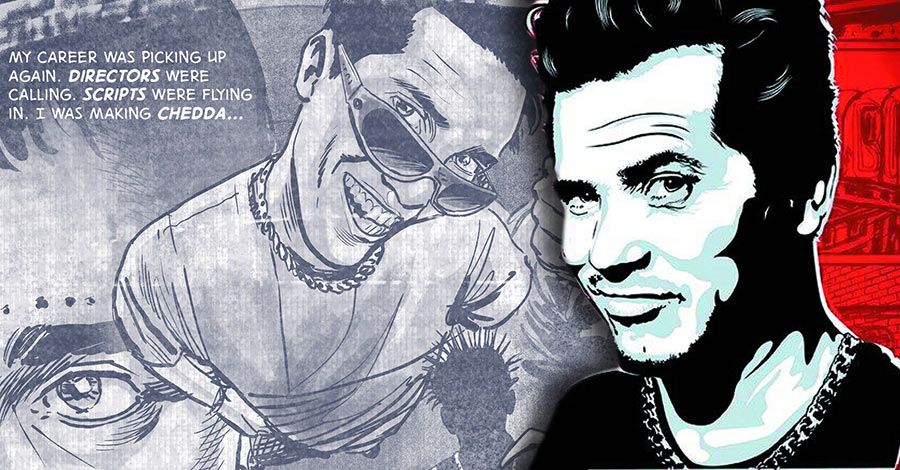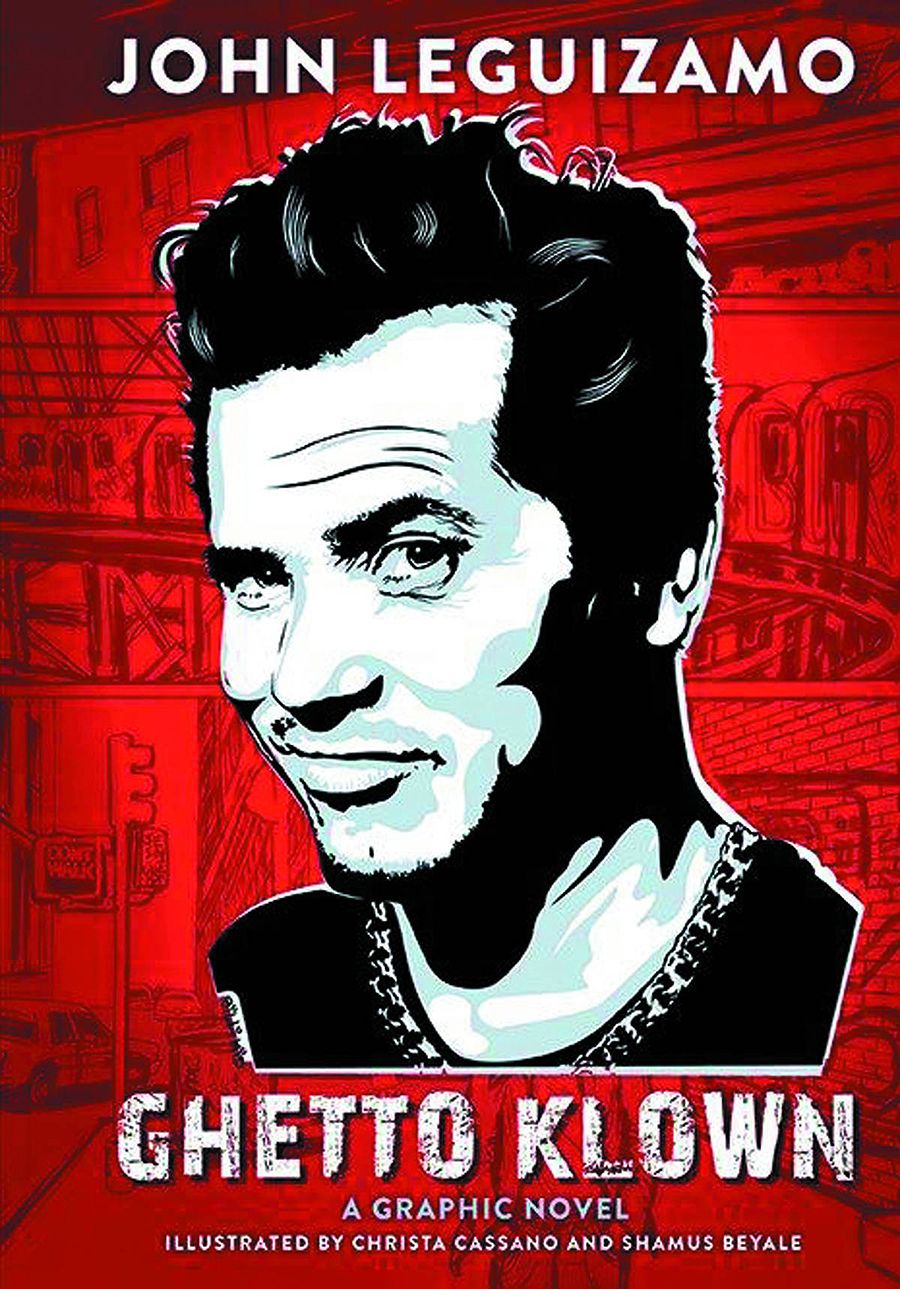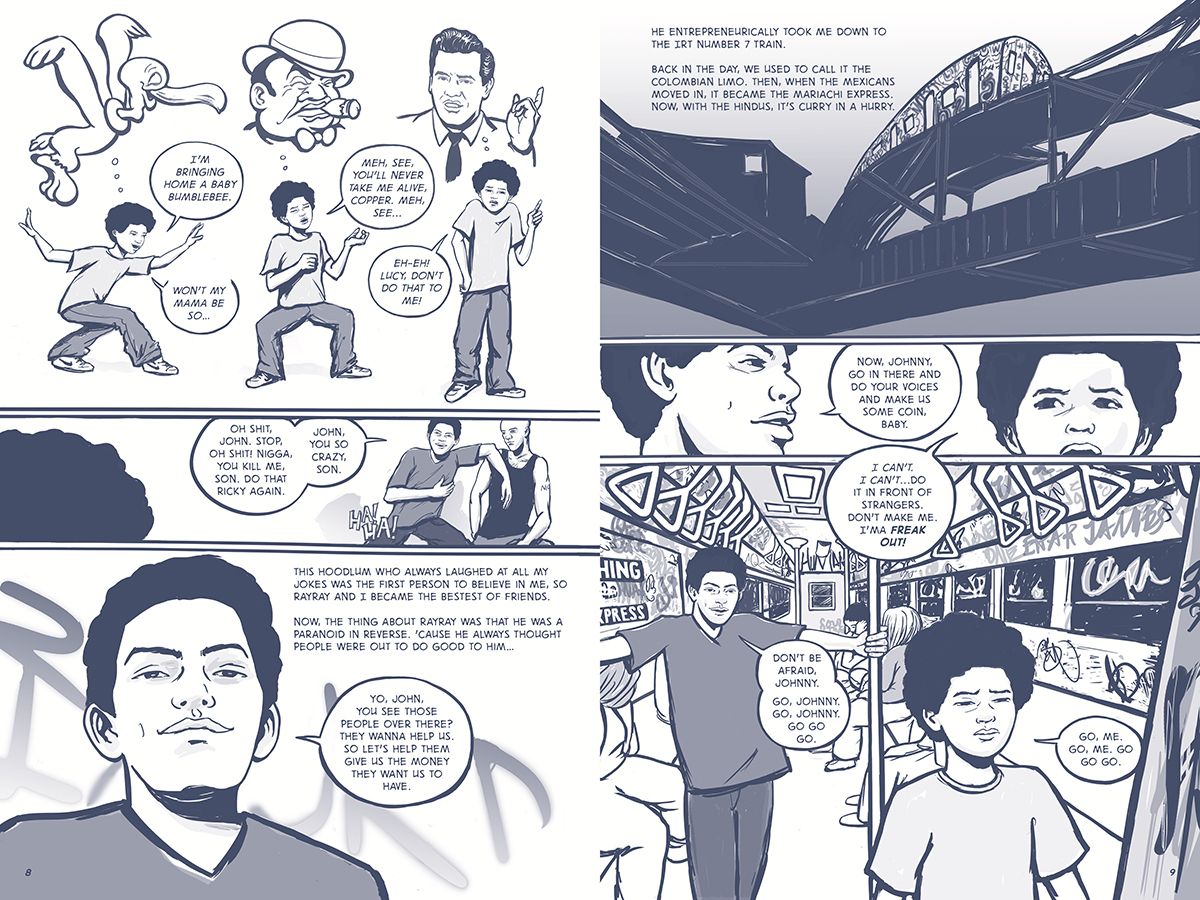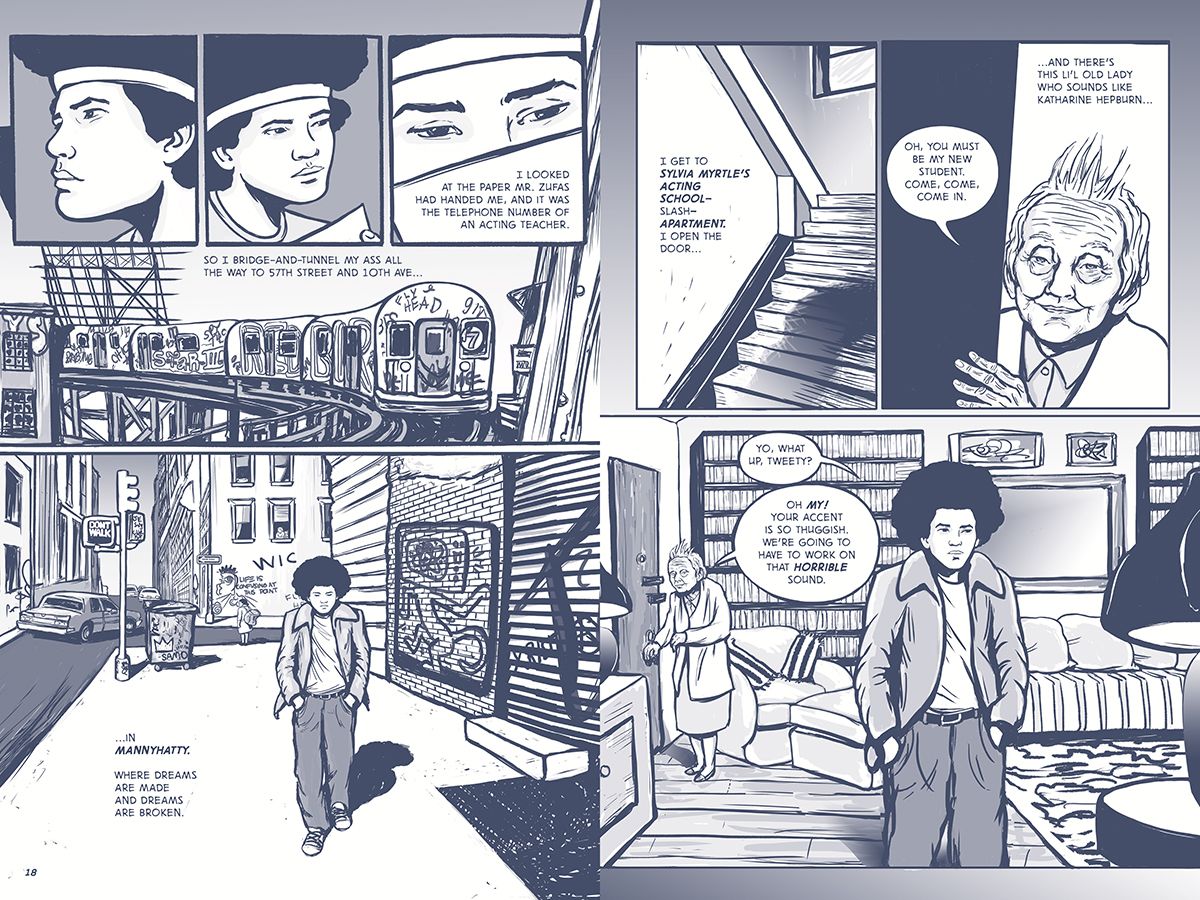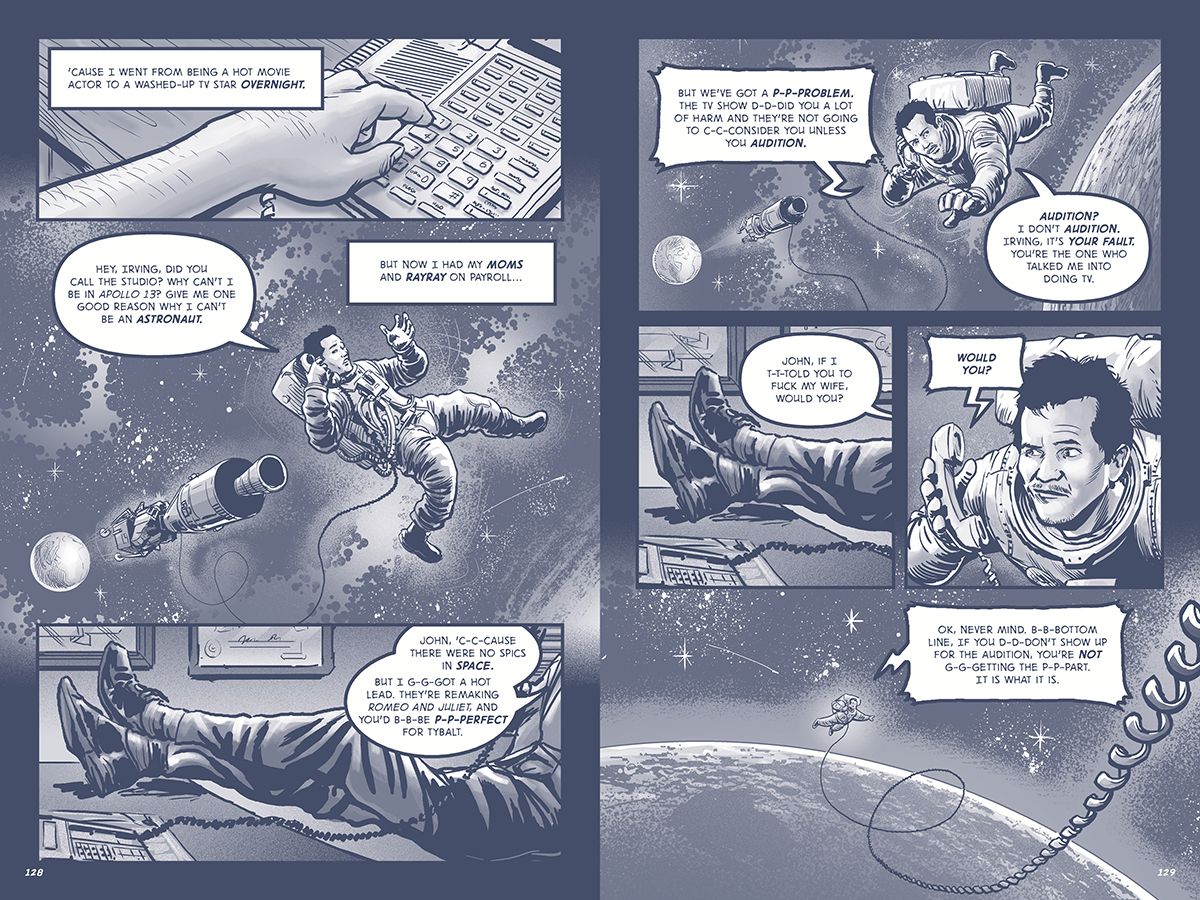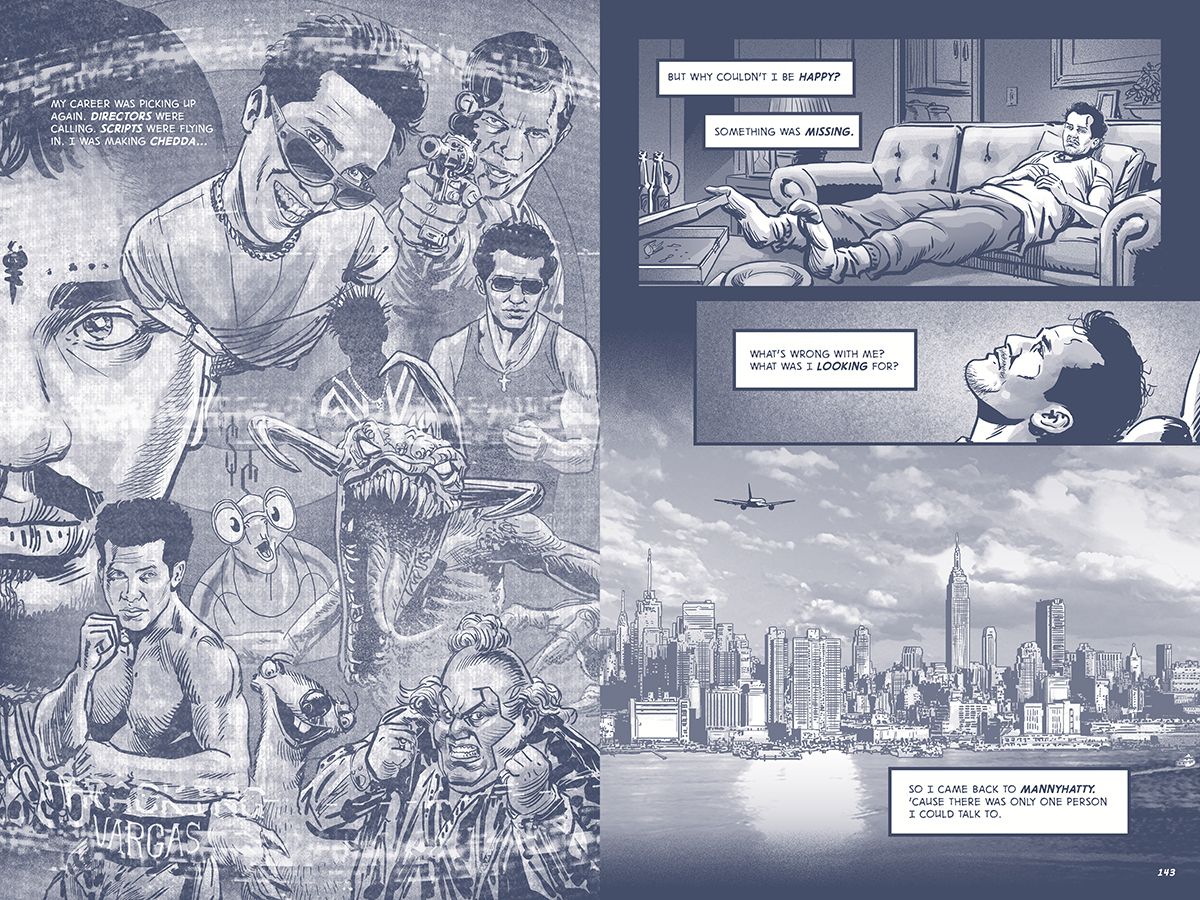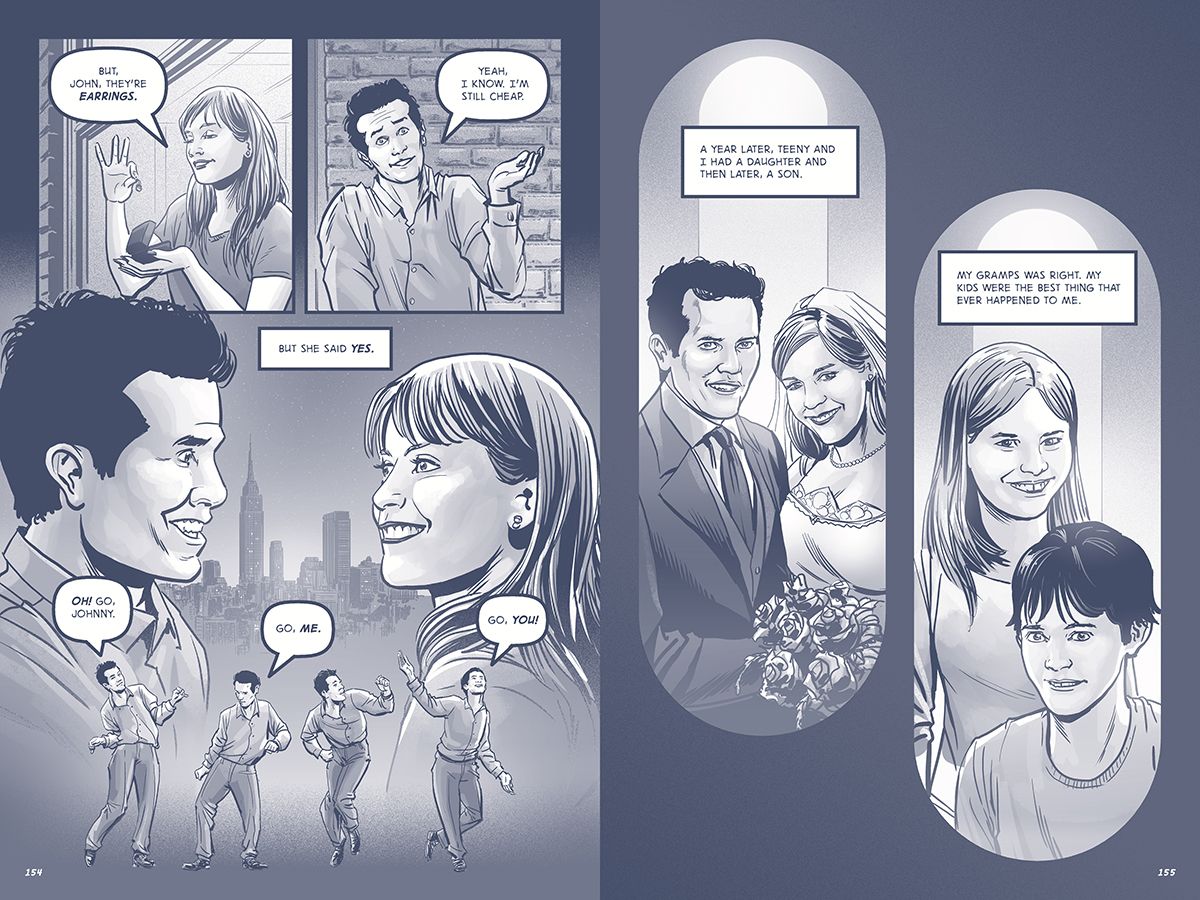With a film career spanning three decades, it's safe to say that John Leguizamo is a household name -- or at least a household voice. Performances in "Romeo + Juliet" and "Moulin Rouge!" pushed him to prominence and his role as the voice of Sid in the "Ice Age" franchise has introduced him to a whole new generation of fans. In recent years he's furthered his already impressive range with a series of roles, appearing in "John Wick," "Ride Along," "The Lincoln Lawyer," and "Chef."
Off screen, though, Leguizamo has also enjoyed a very successful career as a playwright and stage actor. His award-winning one man shows "Mambo Mouth," "Spic-o-Rama," "Freak," "Sexaholix...A Love Story" and others have played in New York and across the country. Along with active careers on the stage and screen, Leguizamo is now venturing into a whole new medium with his his first graphic novel from Abrams ComicArts, "Ghetto Klown."
John Leguizamo On "Kick-Ass 2," Latino Roles in Hollywood & More
Based on his play of the same name, "Ghetto Klown" is an autobiographical tale of Leguizamo's life covering his combative relationship with his father, his marriages, studying under Lee Strasberg, and stories of various co-stars including Al Pacino, Steven Seagal and others. CBR News spoke with Leguizamo about the brutally honest book, which touches on everything from depression and anxiety to failure and success.
CBR News: Why lead you to turn your play "Ghetto Klown" into a graphic novel?
John Leguizamo: I thought it was the best medium for my play. My one-man shows are very much like a graphic novel where the dialogue has to carry the story but the visuals have to offer clues and emotional insight about the text. They can't double up or they become redundant. The play traveled through time and space very quickly and only a graphic novel could keep up with the pace.
And dialogue in a one-man show has to be as succinct as poetry without seeming to be poetry, so it was perfect for an adaptation. Ever since I read "Persepolis" and "My Friend Dahmer," I've been hooked on graphic novels as personal narrative and not just elaborate comic books. Although I am a big fan of "The Dark Knight," "Weapon X" and "Elektra."
What was the process of making the book like?
Well, I approached it as a documentary by Ken Burns. I found Shamus Beyale and Christa Cassano very open to the process and welcoming to input, so it was an instant love-fest. I gave them tons of family photos, addresses they could Google, photos of locations I had researched and DVDs of the movies and listed scenes they should watch. What resulted was how they filled in the blanks and brought to the page my whole life. It's so weird to see images of experiences that are just in my mind, but now they are concrete images. There was also lots of room in a graphic novel for funny and fun commentary, interesting juxtaposition of images for commentary. Also I love the close up and wide establishing shots like a storyboard that a graphic novel brings to story telling.
EXCL. PREVIEW: John Leguizamo's "Ghetto Klown"
Were there any scenes that Christa and Shamus interpreted differently from what you had in your head?
Well, not opposite but more like, "Wow, how did they read between the lines as if they had surveillance cams in those rare moments of my life?" They also found some great dramatic moments with great facial expressions. And, what's even more impressive, this was a one-man show so I was playing all the characters -- but now the full scene is laid out with all the participants and the exact locations.
You also wrote the memoir "Pimps, Hos, Playa Hatas, and All the Rest of My Hollywood Friends" and now you've also got a graphic novel based on your life. Which was more fun to make?
Well, of course there is crossover because they are based on my life, but "Ghetto Klown" is the most important moments distilled to their most valuable seconds. That is the beauty of a graphic novel; there is no room for indulgence or excess. It's the purest format for a storyteller. In the autobiography, you can go on and on about anything and everything. It's more about casting a wide net and a graphic novel is about the fine tuning of that verbal diarrhea.
In the book you talk about some of the people you worked with, and I have to say that both Brian De Palma and Steven Seagal seem nuts -- De Palma in a different, more interesting way than Seagal. What was it like working with them?
I disagree -- Brian does not come across as nuts, he comes across as a filmmaker who knows how to work actors and manipulate them to get the best performance out of them. If you have ever worked with actors, it's a lot of psychology, babysitting and handholding. I know; I've directed. I love actors and they bring so much to their work but you still have to do lots of diplomatic tiptoeing. I would work with De Palma any time. He is one of the great, American, original directors.
Now Seagal is not interesting crazy, just dickish! He has no respect for others and that is so damaging to the whole creative process that real actors subscribe to. I'm not the only person he's hit without warning. He's done it many times and it's inexcusable. We are there to make a great story and help everyone achieve this task, be they the director or the writer or the other actors. He only cares about himself to the point of inflicting harm to others.
Depression and anxiety and self-doubt are a major theme in the book and you really treat the book -- and the show -- like therapy, in a way.
I thought it was important to reveal the life of an artist and I know so many of my friends deal with the crazy ups and downs of being an actor -- especially comedians. The downs are so severe because we put so much pressure on ourselves and start to live up to some kind of elevated self that doesn't exist. You can't keep up with perfection. It will undo every time and somehow the more successful you become, the more pressure you put on yourself to be perfect. So the is the trap and then you self-destruct. I wanted to show other artists that it happens to all of us and that you can come back from it. I was hit with stage fright, panic attacks, bouts of paralyzing depression, but if you can ride it out you come out the other side replenished and with a deeper understanding of the human condition.
What do you look for in a role and in a project? In recent years you've done "Cymbeline," "John Wick," "American Ultra," another "Ice Age" movie -- you really do jump around a lot from one project to another.
I go after what fulfills me at the moment. Sometimes I want to do a drama, other times a comedy or a biopic. That's why I got into this business, [it] was the great opportunity to become others and live in someone else's shoes. And I'm lucky that I have that freedom and am very grateful to have those opportunities.
So what's next for you? Are you writing?
Yes, I'm writing my next one-man show called "Latin History For Dummies" about the complete absence of our contributions to making of America. It's mind boggling to find out that all through my youth I was made to feel that we Latinos had not contributed to the making of this great democracy, when we actually were hugely responsible for lots of the success of the American Revolutionary War, the Civil War, the War of 1812, WW I and WW II. 500,000 Latinos fought in that war and you never hear about it. The book "From Here To Eternity" was about a Mexican veteran but you would never know it. The show opens at Berkeley Rep Theater in July of 2016, then [it moves to] The Public Theater.
"Ghetto Klown" is in stores now.

